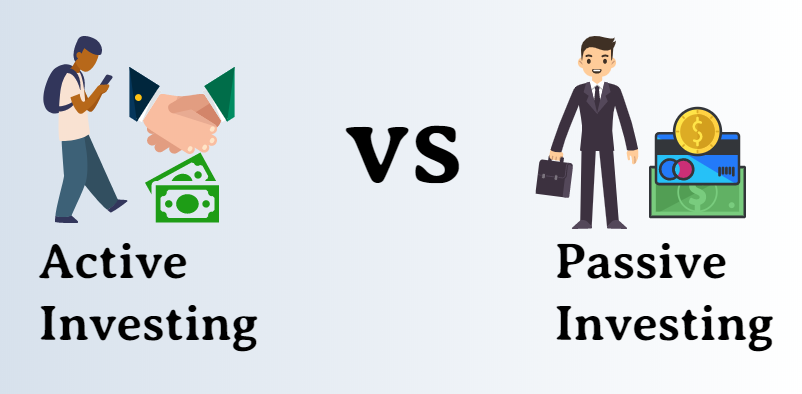Passive investing or passive investing australia is a long-term strategy for building wealth by buying securities that mirror stock market indexes and holding them long-term. It can lower risk since you’re investing in a mix of asset classes and industries, not an individual stock.
Table of Contents
What is passive investing australia?
To understand passive investing, imagine the saying, “slow and steady wins the race.” Passive investing or passive investing australia is a long-term strategy for building wealth by purchasing securities that mirror stock market indexes, then holding them long-term. “And the purpose of you investing this way is that you basically need to replicate the returns of that particular market index,” says Rianka R. Dorsainvil, a certified financial executive. and initiator and co-CEO of 2050 Wealth Partners, based in Upper Marlboro, Maryland. as fine wine, the longer you hold your investments, the longer they have to mature and provide you satisfactory returns.
It’s a well liked kind of investing. In the report of a 2021 Gallup Investor Optimism Index, 71% of U.S. investors surveyed said passive investing was the best strategy for long-term investors who want the best returns. Of those perceive it, only 11% said “timing the market” was more important to earn high returns. A seniority— 89% — said “time in the market” was more significant.
Active investing vs passive investing
So what’s the variation between passive and active investing?
In active investing, investors research individual companies and buy and sell stocks in an effort to beat the stock market.
In passive investing/ passive investing australia , you pick up a basket of assets and try to mirror what the stock market is doing.
The kind of investing you select depends on what your goals are, says Christopher Woods, CFP and founder of LifePoint Financial Group, based in Alexandria, Virginia.
For example, he says if you’re investing in a retirement account where you’re planning to hold investments for 20 years or more, passive investing may be a better option since you won’t incur the same fees as you would whether you were frequently buying and selling.
“Whether you think about the cost savings in a passive investment over the course of 20 or 30 years, it’s significant,” Woods says.
How much risk you’re ready to take also plays a role. If you run at the sight of stock charts or can’t handle the eagerly that can come with active trading, passive investing may eliminate the sweaty palms and accelerated heart rate.
Appropriately , what are the pros of active investing? The biggest advantage is which active investors can handpick their investments, says Kashif A. Ahmed, a CFP and president of American personal Wealth LLC, based in Bedford, Massachusetts.
“None everything in an index is worth buying,” he says.
Passive Investors ready to put in the work and research individual stocks may prefer to select where they put their money. What rewards could they reap from all which hard work? likely winning big and beating the market.
» Learn more about active vs. passive investing
Pros and cons of passive investing australia
Pros
Lower maintenance: always tracking the performance of your investments can be time consuming. As a passive investor, there’s no requirement to check your portfolio several times a day since you’re in it for the long haul. You don’t have to worry about trying to forecast the winners and losers in the stock market — you’re simply riding the wave.
Steady returns: According to Morningstar’s active/passive report, passive funds outperform active ones in the long term. In the previous 10 years, only 25% of active funds beat passive funds.
Lower fees: Passive investing doesn’t need as much buying and selling as active investing, that can mean lower expense ratios — the percentage of your investment that you pay the fund. Lower capital gains taxes: Every time you sell shares for a profit, you similaar pay capital gains taxes. Passive investors hold assets long term, that means paying less in taxes.
Lower Risk: Passive investing can lower risk, since you’re investing in a broad mix of asset classes and industries, as opposed to relying on the performance of individual stock.
Cons
Limited investment options: If you invest in an index fund or buy an exchange-traded fund, or ETF, you can’t invite each investment or drop companies you don’t expect are worthwhile since you don’t own the underlying stocks directly.
May not get above market returns: As your goal is to match the market average, you may not achieve above-market returns.
Passive investing strategies
There are several methods to be a passive investor. Two easy ways are to buy index funds or ETFs. Both are types of mutual funds — investments which use money from investors to buy a range of assets. As a lender in the fund, you earn any returns.

Yet , index funds and ETFs let you invest in holdings from various industries, passive investing can help you diversify, so even whether or not one asset in your basket has a decline, it shouldn’t affect your entire portfolio.
Index funds
Index funds can be a best option for the passive investor. They easily track the rise and fall of the chosen companies/assets within the index.
One difference between index funds and ETFs is that you can only buy and sell index funds at set costs after the market closes and the index fund’s net asset value is announced.
Index funds do require periodic rebalancing because index suppliers are continuously adding and dropping companies. Rebalancing is a part of portfolio management that make sure your investments still align with your goals.
» Need a broker for your mutual funds? Look at our top picks
ETFs
ETFs, also a type of mutual fund that tracks an index, are another method to get into passive investing. They might be a good choice for investors who need to be a little more hands-on when managing a passive portfolio.
ETFs cut out the agent , the mutual fund firm . Instead of the money you invest in ETFs going to reciprocal fund companies to invest, you buy the fund from other investors who are selling shares they have.
Another perk of using ETFs for passive investing? They’re often low-cost to buy than index funds. You can buy one for the similar amount of a single stock, However have more diversification than an individual stock would give. You can buy ETFs for stocks and bonds, in addition to international ETFs, and you can diversify by sector.
» Dig deeper into ETFs vs. index funds
Robo advisors
If you want to purchase and hit the snooze button, you can use a robo-advisor. They use computer algorithms and trading strategies to choose investments which align with your goals. You can also need the best of both globly as many robo-advisors offer both index funds and ETFs. Automatic rebalancing is also repeatedly included with your account.
» Ready to start PASSIVE investing? Look our list of the best robo-advisors
Active management
It is possible to use passive investments, still actively manage your portfolio, Ahmed says. The basic way to do this would be through diversification.
you need to slice up your pizza.at that time ,you can use index ETFs to build that portfolio. And then actively balance it and trade it.”
Another way to assiduously manage a passive portfolio is through direct indexing. This is when you own the stocks in an index directly, and it’s possible since you can buy fractional shares of a stock. With direct indexing, you can manage your portfolio yourself and personalize the index in any way you like.
That said, it’s not always simple to choose the investments in your portfolio, so whehter you need help, consider reaching out to a financial advisor.










